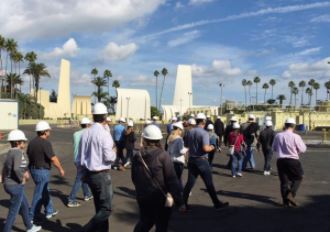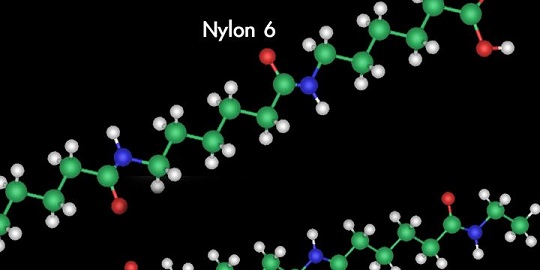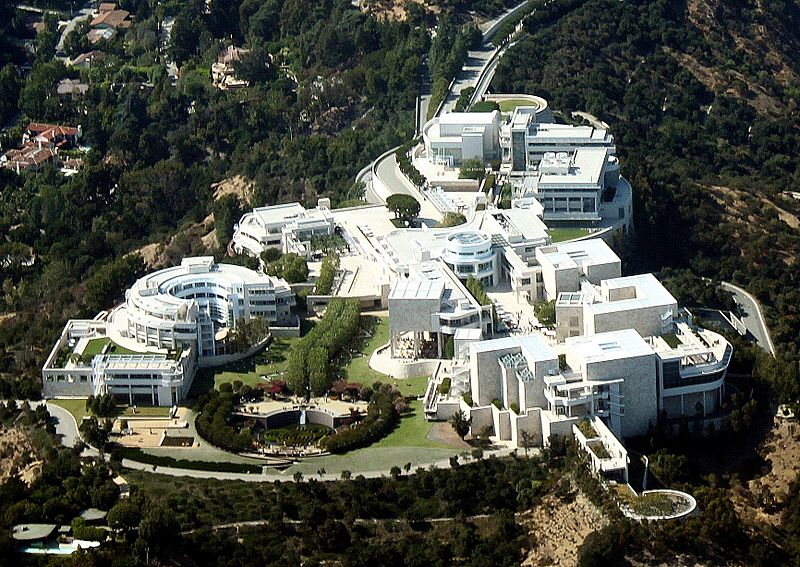February 27, 1925 – Congress passes Osage Indians Act –
As a result of murders and a “reign of terror” in the Osage Nation, the U.S. Congress passed the Osage Indians Act of 1925, prohibiting non-Osages from inheriting headrights of tribal members possessing more than one-half Osage blood. The Osage people’s sudden wealth from oil royalties (see Million Dollar Auctioneer) had brought criminal conspiracies to the Oklahoma Indian Reservation with dozens of Osage killed for the headrights to their land.
February 27, 1962 – California Voters approve Offshore Drilling
Voters in Long Beach, California, approved the “controlled exploration and exploitation of the oil and gas reserves” underlying their harbor south of Los Angeles. The city’s charter had prohibited drilling there since a 1956 referendum, but advances in technology offered new and environmentally sensitive opportunities to exploit an additional 6,500 acres of the Wilmington oilfield.

Los Angeles Association of Professional Landmen members toured THUMS in 2017. Photo courtesy LAAPL.
Four artificial islands were soon constructed at a cost of $22 million by a consortium of companies called THUMS: Texaco (now Chevron), Humble (now ExxonMobil), Union Oil (now Chevron), Mobil (now ExxonMobil) and Shell Oil. The islands in 1967 were named Grissom, White, Chaffee, and Freemen in honor of lost NASA astronauts. Occidental Petroleum purchased THUMS in 2000.
Eventually operated by the California Resources Corporation, the four “Astronaut Islands” are designed to appear to be occupied by upscale condominiums, thanks to Disneyland architect Joseph Linesch, whose integration of oil production structures the Los Angeles Times described as “part Disney, part Jetsons, part Swiss Family Robinson.”
Learn more in THUMS – California’s Hidden Oil Islands.
February 28, 1935 – DuPont Chemist invents Nylon
A former Harvard professor working in a DuPont research laboratory discovered the world’s first synthetic fiber, the petroleum product nylon. After experimenting with artificial materials for more than six years, professor Wallace Carothers created a long molecule chain — a stretching plastic. The inventor earlier discovered neoprene (commonly used in wetsuits).

Carbon, hydrogen and oxygen atoms strung in a chain created manmade fibers used for textiles and plastics. Each molecule contains six carbon atoms.
Carothers produced the fibers when he formed a polymer chain using a process to join individual molecules. Each molecule consisted of 100 or more repeating units of carbon, hydrogen and oxygen atoms, strung in a chain. DuPont company patented nylon in 1935, but it was not revealed until 1938.
Originally called “Fiber 66,” the polyamide resulted from 12 years and $27 million in research. Several marketing names were considered for the “artificial silk,” before nylon was chosen. The first commercial use was for toothbrush bristles. After World War II, nylon hosiery for women would make a fortune for the Delaware chemical company.
Learn more in Nylon, a Petroleum Polymer.
February 28, 1982 – Getty Museum becomes Richest in World
Following years of legal battle by his relatives, the J. Paul Getty Museum in Los Angeles became the most richly endowed museum in the world after receiving a $1.2 billion bequest left to it by oil billionaire J. Paul Getty, who died in 1976.

The J. Paul Getty Museum opened in Los Angeles in 1954. The museum’s art collection today is housed at the Getty Center (above in 2009) and the Getty Villa on the Malibu coast.
After working in his father’s oilfields in Oklahoma, Getty founded his first oil company in Tulsa and drilled the Nancy Taylor No. 1 well near Haskell, where oil and natural gas production began in 1910. Getty’s oil wealth philanthropy also established the Getty Conservation Institute and the Getty Research Institute, according to the J. Paul Getty Trust.
February 29, 1916 – Highway “Cloverleaf” patented
Maryland civil engineer Arthur Hale patented his design for a “street crossing,” which would become the modern cloverleaf interchange. His concept, which managed traffic with looped roads that did not require traffic signals, improved diamond interchanges used at junctions when freeways crossed minor roads.

The first cloverleaf was constructed in New Jersey on the Lincoln Highway (Route 25). In the same year Hale received his patent, Tennessee garage worker Ernest Holmes installed a hand-cranked rig on the back of a 1913 Cadillac — inventing the tow truck.
March 1, 1921 – Halliburton improves Well Cementing
Erle P. Halliburton patented his “Method and Means for Cementing Oil Wells,” improving a key oilfield technology. “It is well known to those skilled in the art of oil well drilling that one of the greatest obstacles to successful development of oil bearing sands has been the encountering of liquid mud water and the like during and after the process of drilling the wells,” he noted in his patent application.

The Halliburton 1921 cementing process isolated geologic zones and helped prevent collapse of casing.
Halliburton’s well cementing process isolated downhole zones, guarded against collapse of the casing, and allowed control of the well, helping to protect the environment. His patent application noted that typical oil production, “hampered by water intrusion that required time and expense for pumping out…has caused the abandonment of many wells which would have developed a profitable output.”
In March 1949, Halliburton Oil Well Cementing Company and Stanolind Oil successfully completed the first commercial application of hydraulic fracturing at a well near Duncan.
Learn more in Halliburton cements Wells.
March 2, 1922 – Osage Nation Oil Lease sells for $1 Million
Under the broad crown of a giant elm next to the Osage Council House in Pawhuska, Oklahoma, Skelly Oil and Phillips Petroleum Company jointly bid more than one million dollars for a 160-acre tract of land.

Colonel Elmer Ellsworth Walters (in striped shirt) was famous as “auctioneer of the Osage Nation.”
The 1922 auction — Oklahoma’s first million dollar mineral lease — took place in the shade of what became known as the “million dollar elm.” Independent producers such as Frank Phillips, Harry Sinclair, Bill Skelly, J. Paul Getty and E.W. Marland were frequent bidders for promising leases. The Osage would erect a statue to their auctioneer, Colonel Elmer Ellsworth Walters, in his hometown of Skedee.
Learn more in Million Dollar Elm.
March 3, 1879 – United States Geological Survey established
President Rutherford B. Hayes signed legislation creating the United States Geological Survey (USGS) within the Department of the Interior. The legislation resulted from a report by the National Academy of Sciences, which had been asked by Congress to provide a plan for surveying the country. The new agency’s mission included “classification of the public lands, and examination of the geological structure, mineral resources, and products of the national domain,” according to USGS.
March 3, 1886 – Natural Gas brings light to Paola, Kansas
Paola became the first town in Kansas to use natural gas commercially for illumination. To promote its natural gas resources and attract businesses from nearby Kansas City, civic leaders erected four flambeaux arches in the town square. Pipes were laid for other natural gas illuminated displays.

Paola, Kansas, residents have annually celebrated “Paola Roots Day” since 1990.
“Paola was lighted with Gas,” proclaimed an exhibit at the Miami County Historical Museum. “The pipeline was completed from the Westfall farm to the square and a grand illumination was held.” By the end of 1887, several Kansas flour mills were fueled by natural gas. Paola’s gas wells would run dry, but more mid-continent oil discoveries would follow.
_______________________
The American Oil & Gas Historical Society (AOGHS) preserves U.S. petroleum history. Become an AOGHS annual supporting member and help maintain this energy education website and expand historical research. For more information, contact bawells@aoghs.org. Copyright © 2024 Bruce A. Wells. All rights reserved.


